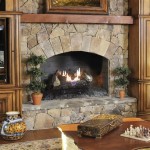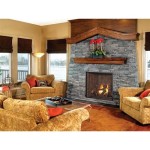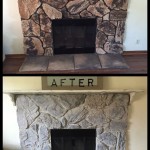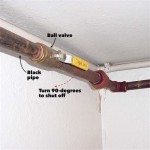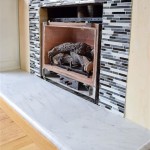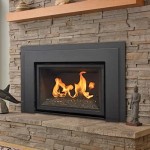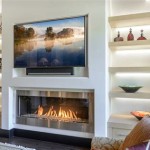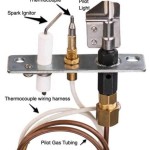```html
Renaissance Rumford Fireplaces: Efficiency and Elegance Reimagined
The Rumford fireplace, a design originating in the late 18th century, represents a significant advancement in fireplace technology. Sir Benjamin Thompson, Count Rumford, a physicist and inventor, developed it aiming to improve upon the inefficiency and smoky drafts plaguing traditional fireplaces of the era. The core principle behind the Rumford design is its shallow firebox with angled sides and a tall, narrow throat, which aims to maximize heat radiation into the room and minimize smoke entering the living space. In recent years, the Rumford fireplace has experienced a resurgence in popularity, often referred to as a "Renaissance" due to renewed interest in its efficiency and aesthetic appeal.
Understanding the historical context is crucial to appreciating the modern resurgence. Prior to Rumford’s innovations, fireplaces primarily served as rudimentary heating devices, often more effective at venting heat than radiating it. Smoke problems were commonplace, and significant amounts of fuel were required to maintain even a modicum of warmth. Rumford's scientific approach, based on understanding the principles of convection, radiation, and airflow, resulted in a design that fundamentally altered fireplace functionality. Today, advancements in materials and construction techniques have further refined the Rumford design, leading to even greater efficiency and performance than the original.
The modern "Renaissance Rumford Fireplace" builds upon Rumford's original concept, incorporating contemporary materials and construction methods while retaining the core design principles. This approach allows for the creation of fireplaces that are not only aesthetically pleasing but also highly efficient in terms of heat output and reduced smoke production. The integration of modern firebrick, insulation techniques, and precision construction ensures optimal performance and longevity. Furthermore, modern Rumford fireplace designs often incorporate features such as dampers and air inlets to further control airflow and improve combustion efficiency.
Key Point 1: Understanding the Rumford Design Principles
The distinguishing features of a Rumford fireplace are primarily designed to maximize heat radiation and minimize smoke. Unlike traditional fireplaces with deep fireboxes, the Rumford fireplace features a shallow, angled firebox. This design allows for greater radiation of heat into the room, as the fire is closer to the opening. The angled sides further enhance this effect by reflecting heat into the living space. The shallow depth also reduces the amount of heat lost up the chimney.
The throat of a Rumford fireplace is significantly narrower and taller than that of a traditional fireplace. This narrow throat creates a constriction that accelerates the flow of hot gases up the chimney, effectively drawing smoke away from the room. The tall throat also helps to maintain a strong draft, further preventing smoke from entering the living space. This design element is critical to the efficient operation of a Rumford fireplace.
The smoke shelf, located above the throat, is another vital component of the Rumford design. It serves to deflect downdrafts, preventing cold air from entering the fireplace and disrupting the upward flow of hot gases. The smoke shelf also helps to collect any soot or debris that may fall down the chimney, preventing it from entering the room. The precise design and placement of the smoke shelf are crucial for optimal performance.
Key Point 2: Materials and Construction Techniques in Modern Rumford Fireplaces
Modern Rumford fireplace construction often utilizes high-quality firebrick. Firebrick is specifically designed to withstand the extreme temperatures of a wood-burning fire, resisting cracking and deterioration. Its dense composition also helps to retain and radiate heat, further enhancing the fireplace's efficiency. The selection of appropriate firebrick is essential for ensuring the long-term durability of the fireplace.
Insulation is another critical aspect of modern Rumford fireplace construction. Insulating the firebox and chimney helps to prevent heat loss and improve overall efficiency. Various insulation materials, such as ceramic fiber blankets and high-temperature mortars, are used to minimize heat transfer. Proper insulation also helps to protect the surrounding building structure from excessive heat, reducing the risk of fire hazards.
Precision construction is paramount for achieving optimal performance in a Rumford fireplace. Accurate angles, dimensions, and alignments are essential for ensuring proper airflow and heat radiation. Modern construction techniques, such as laser leveling and precise cutting tools, allow for the creation of fireplaces that meet the exacting specifications of the Rumford design. Skilled masons are crucial for executing these complex construction techniques.
Key Point 3: Advantages and Considerations of a Renaissance Rumford Fireplace
The primary advantage of a Rumford fireplace over traditional fireplaces is its superior efficiency. The design maximizes heat radiation, providing more warmth with less fuel. This translates to reduced energy consumption and lower heating costs. The efficient combustion also reduces smoke production, minimizing environmental impact and improving indoor air quality.
Another significant advantage is improved aesthetics. The shallow firebox and clean lines of a Rumford fireplace create a visually appealing focal point in a room. The design lends itself well to a variety of architectural styles, from traditional to contemporary. The aesthetic appeal contributes to the overall ambiance and value of the home.
However, there are also considerations to keep in mind when considering a Renaissance Rumford Fireplace. Due to the precise construction requirements, the installation cost may be higher compared to traditional fireplaces. It's crucial to engage experienced masons who are familiar with the specific techniques required for Rumford fireplace construction. Proper maintenance, including regular chimney cleaning, is also essential for ensuring long-term performance and safety. Furthermore, the shallow firebox might limit the size of logs that can be burned, so it's crucial to consider wood availability and preferred burning habits.
The placement of the fireplace within the home also plays a crucial role in its efficiency. Locating the fireplace in a central area maximizes heat distribution throughout the living space. The proximity to windows and doors should also be considered to minimize heat loss. Careful planning and consideration of the home's layout are essential for optimizing the performance of a Rumford fireplace.
Beyond its functional benefits, the Renaissance Rumford Fireplace often represents a commitment to craftsmanship and sustainable living. By prioritizing efficiency and reducing reliance on fossil fuels, homeowners can contribute to a more environmentally responsible lifestyle. The fireplace becomes more than just a heating source; it becomes a symbol of thoughtful design and responsible resource management.
```
Renaissance Rumford 1000 Woodburning Zero Clearance Fireplace Fergus

Renaissance Rumford 1000 The Fireplace King Huntsville Ontario Muskoka For Your Heating Cooling And Grilling Needs

Icc Renaissance Rumford 1000 Woodland Stoves Fireplaces

The Renaissance Rumford 1000 Wood Burning Fireplace Perfect Focal Point

Renaissance Rumford 1500 Woodburning Zero Clearance Fireplace Fergus

Renaissance Rumford 1500 The Fireplace King Huntsville Ontario Muskoka For Your Heating Cooling And Grilling Needs

Rumford 1000 Icc Rsf

Renaissance Rumford 1000 Friendly Fires

Foyers Cadieux Fireplaces Wood Rumford 1000

Rumford 1000 Backwoods Ten One Seven Inc
Related Posts

